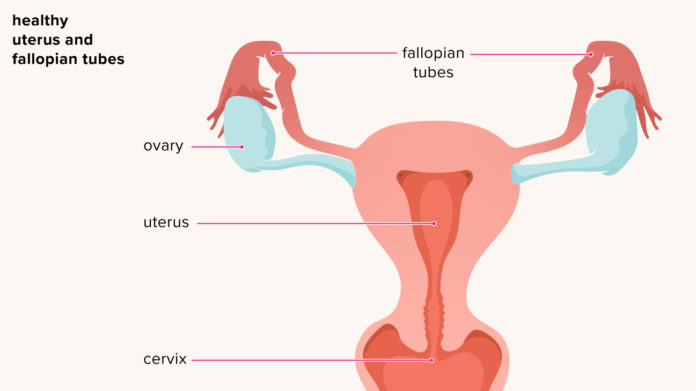Pelvic inflammatory disease (PID) is an infection of a woman's reproductive organs.
It happens when bacteria from your vagina and cervix spread to the uterus, fallopian tubes, or ovaries.
Causes and Risk Factors of Pelvic Inflammatory Disease
You can get PID anytime bacteria enter the reproductive tract.
Most often, PID is caused by the same bacteria that cause chlamydia and gonorrhea, which are sexually transmitted infections (STIs). These bacteria are usually spread during unprotected sex.
You're at higher risk for PID if you:
- Have an STI
- Are sexually active and are younger than 25
- Have unprotected sex
- Have had PID or an STI in the past
- Douche your vagina
- Have more than one sexual partner
- Have a partner who has more than one sexual partner
- Have recently had an IUD inserted
How Is Pelvic Inflammatory Disease Diagnosed?
- Tenderness in your reproductive organs
- Pus near your ovaries or fallopian tubes
- Irregular discharge from your cervix or vagina
Your doctor may also order tests to help make a diagnosis. These tests may include:
- A test for STIs, which can cause PID
- A test for a urinary tract infection (UTI), which can be the source of pelvic pain
- An imaging test (such as an ultrasound or MRI) so your doctor can look for signs of PID
Prognosis
Treatment and Medication Options for Pelvic Inflammatory Disease
If you have a very serious infection that doesn't improve with standard treatment using oral antibiotics, you may need to begin treatment with intravenous (IV) antibiotics — and, later, take additional antibiotic pills — or have surgery to repair or remove your reproductive organs.
You may need to avoid sexual intercourse until your PID has been effectively treated.
Prevention of Pelvic Inflammatory Disease
Practicing safe sex Use a condom when you have sex and limit your number of sexual partners.
Not douching This cleansing method can disrupt the balance of bacteria in your vagina.
Getting tested for STIs Treating an STI as early as possible can lower your chances of getting PID.
Asking your partner to get tested This can help prevent the spread of STIs.
Research and Statistics: Who Has Pelvic Inflammatory Disease?
Approximately 4.4 percent of women ages 18 to 44 have been diagnosed with PID at some point in their lives. This equates to about 2.5 million women in the United States.
Related Conditions of Pelvic Inflammatory Disease
- Infertility According to the American College of Obstetricians and Gynecologists, 1 in 10 women with PID will become infertile, because of scarring in the fallopian tubes
- STIs Gonorrhea and chlamydia are the main causes of PID.
Resources We Love
Centers for Disease Control and Prevention (CDC)
The CDC's comprehensive coverage of PID explains what this disease is and how it's treated; it also outlines the possible complications that can occur and provides the latest statistics on the condition.
American College of Obstetricians and Gynecologists (ACOG)
ACOG is a trusted source for Everyday Health editors, with easy-to-understand info on PID, including a helpful glossary of terms.
Mayo Clinic
A go-to resource for Everyday Health editors, the Mayo Clinic has up-to-date info on the basics of PID, as well as what to expect from your healthcare provider and tips on coping with a PID diagnosis.
Additional reporting by Abigail Libers.
Editorial Sources and Fact-Checking
- Pelvic Inflammatory Disease (PID) – CDC Fact Sheet. Centers for Disease Control and Prevention. November 19, 2020.
- Pelvic Inflammatory Disease (PID): Symptoms and Causes. Mayo Clinic. April 23, 2020.
- Pelvic Inflammatory Disease. U.S Department of Health and Human Services Office on Women's Health. April 9, 2019.
- Kreisel K, Torrone E, et al. Prevalence of Pelvic Inflammatory Disease in Sexually Experienced Women of Reproductive Age — United States, 2013–2014. Morbidity and Mortality Weekly Report (MMWR). January 27, 2017.
- Pelvic Inflammatory Disease. Planned Parenthood.
- 2015 STD Treatment Guidelines: Pelvic Inflammatory Disease. Centers for Disease Control and Prevention. June 4, 2015.
- Pelvic Inflammatory Disease (PID). American College of Obstetricians and Gynecologists. August 2019.













































